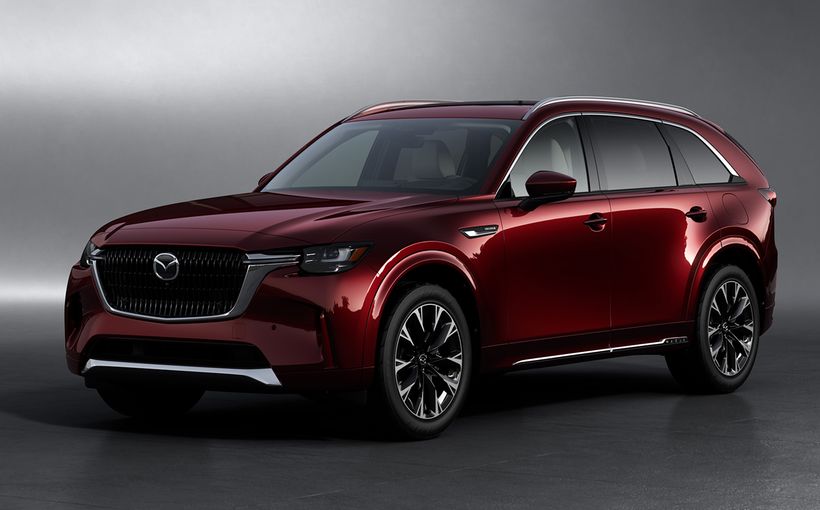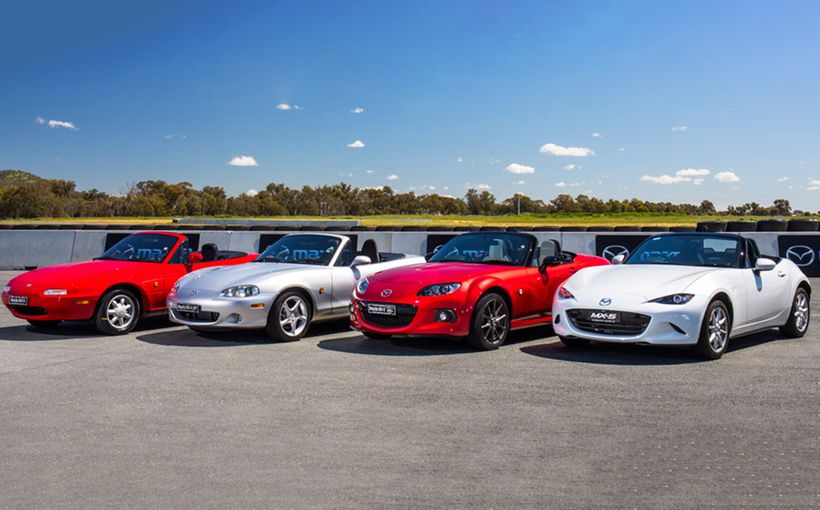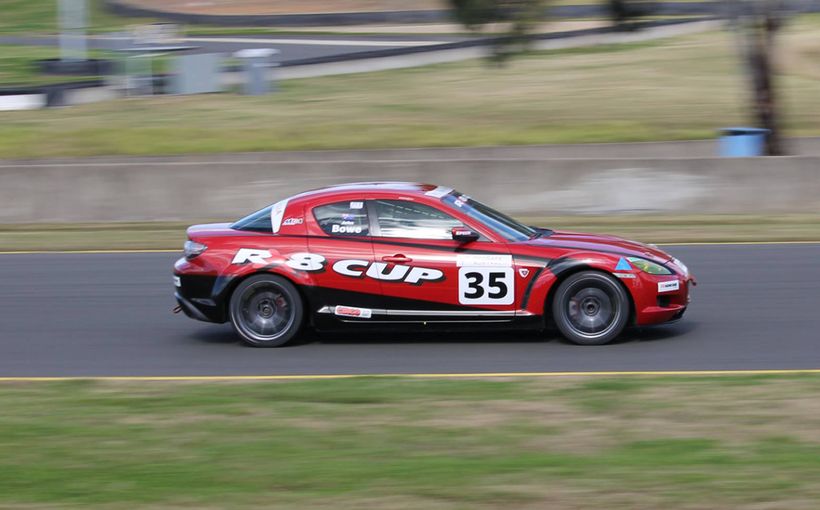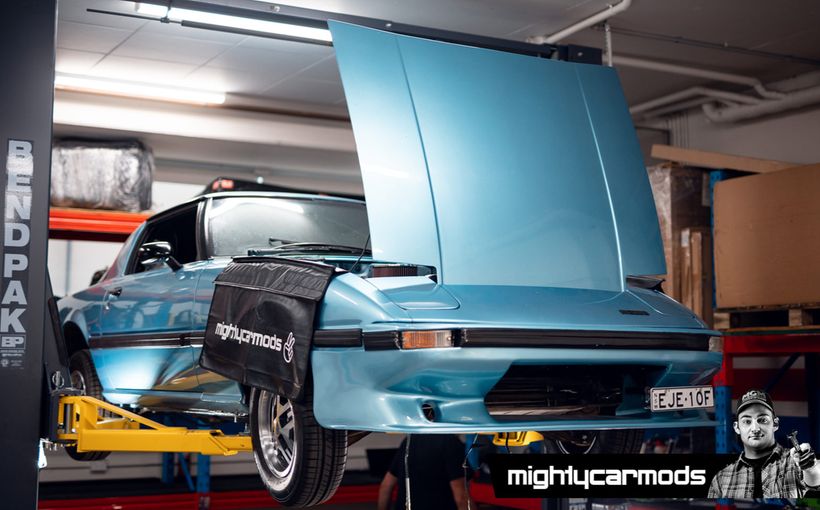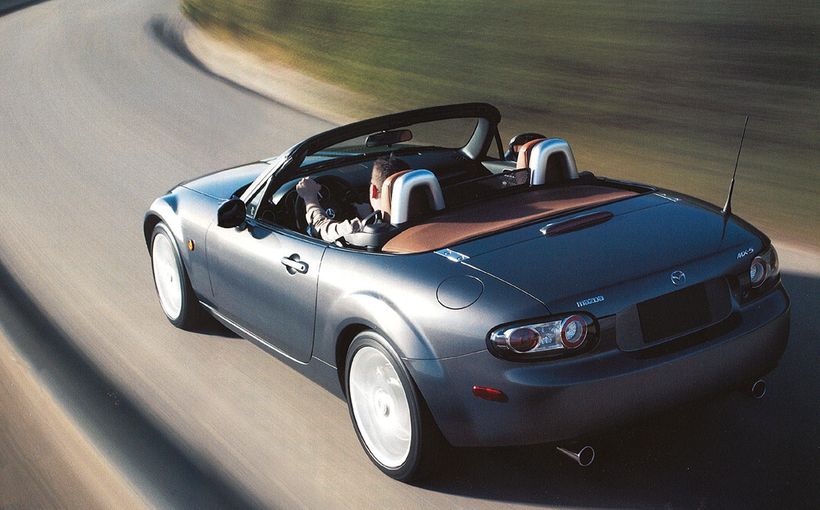Mazda Capella/ RX-2: Rotary power transforms an ordinary car

It was early 1976. I had never given the Mazda Capella RE much thought, didn't even know it was called 'RX-2'. And then my best friend rocked up in a red coupe with a new engine. The timing was interesting because I had just bought myself a nice lemony yellow Fiat 125. We'd paid similar money. The fact that the Mazda had a new engine served to confirm my idea that the rotary engine was unreliable and short-lived. I was in those days a complete Euro car snob.

Alongside the understated Fiat the Mazda looked to me sort of, well, brash. Both cars had cost roughly the same, some $2500, at a time when a new HJ Holden 202 automatic was almost $5000. Bargains, both. But surely my car was superior?
So we had a short race on a quiet stretch of bitumen in country Victoria. From zero to 70 mph was the first part, then continuing at that speed - or faster if possible through a series of corners with 45 advisory signs. After watching the Capella disappear ahead of the pale yellow bonnet of my pedigree machine (having trounced it on acceleration), I never felt quite the same way about European cars again. The Fiat had nicer steering, stronger brakes and a less jiggly ride but that was about it. From that day on a Mazda rotary was there or thereabouts whenever I fancied buying a new or nearly new performance car.

'What a car!' was the concluding line of Road & Track magazine's road test of the Mazda RX-2. And this wasn't the 'dirty' car such as Australian and English drivers were relishing but one handicapped by hefty emission controls, a relative slug. R& T named it 'Import Car of the Year' for 1972.
The rotary-engined version of the Capella was launched in Japan on 13 May 1970 and known initially as the R612. Just 13 days later, Toyo Kogyo (manufacturer of Mazdas) issued a press release announcing that the R612 designation had been dropped in favour of RX-2.
The Capella was the third production Mazda with a rotary engine. It was preceded by the purpose-built Cosmo Sport 110S and the R100. Like the R100, R612 shared its body shell with a reciprocating engine car, the Capella 1600. Obviously senior management at Toyo Kogyo had decided that something sexier in the name department was needed and the RX- prefix was launched.
In some ways the R100 had constituted a modest beginning to Toyo Kogyo's mass production of rotaries. It was an almost apologetic car from the company which proudly called itself 'The World's Most Creative Automaker'. Apologetic? Well, certainly unassuming. It was as if the corporate line was: we have a world-beating engine but we don't want to look as if we're boasting, so we've dropped it into a fairly ordinary Corolla-sized coupe.
The RX-2 was considerably more serious. Compared with the R100 it was faster, more spacious and handled better. It could be had as coupe or sedan. And, although many commentators rated the earlier Luce (1500/1800) cars further up the attractiveness scale – that Bertone bodywork had originally been slated for an Alfa Romeo - there was no denying that the coupe version at least was a stylish piece of work.

The heart of the rotary-engined Capella was the larger 12A engine. Where the capacity of each chamber in the 10A unit measured 491 cc, the addition of 10 mm width to these took the capacity to 573 cc. The exhaust port shape was altered to minimise exhaust noise, 'making this model one of the quietest cars in its category' according to the press release.
Peter Robinson, editor of the magazine at the time, went further. In the December 1972 edition of Wheels in his test of a Capella he declared:
In all our experience we can't recall a car, any car, with an engine/transmission package that operates smoother and quieter. There may be some very expensive models that match the RE auto but none surpass it.
What, anyway, was the RX-2's 'category'? It has always been difficult to relate the capacity of a Wankel engine to a conventional reciprocating design but the convenient method is to double the effective displacement. Thus the 10A's pair of 491 cc chambers, when doubled, equate to almost two litres, while the 12A comes out at 2282 cc.

Realistically speaking, however, the performance available from the standard 12A - even when observing the conservative tachometer redline (entering a deep red zone of superb urge!) was far in excess of typical 2.3-litre cars of 1970. One of its closest rivals was the Ford Capri GT 3000, which suggests that the 12A was roughly equivalent to a well tuned 3.0-litre piston engine.
In his road test of the RX-2 for Motor Trend, Steve Smith wrote:
…you can suck the doors off anything not specifically built for setting drag strips on fire. (Moreover, it has as much punch at 60 as it does at 30.) The RX-2 can, for example, make mincemeat of a BMW 2002, one of the fastest sports sedans made.
The 1970 currency of power output was horsepower. By comparing the brake horsepower (DIN) of various rotary engines, a clear idea of their relativity emerges. The R100 had 100, the 110S - per the name - 110, while the RX-2 had 120. The later 13B started out with 126.

When it was introduced onto the Australian market in the spring of 1970, the RX-2 set new standards for a compact offering in the $3500 class. Where the R100 had been lineball in acceleration with an MGB Mark II and blessed with a higher top speed, the RX-2 simply left the British roadster in its dust. It was also quicker than the Fiat 124 Sport Coupe 1600. While it couldn't challenge a Torana XU-1, it could thrash a standard GTR.
As for those unfortunates who believed that the six-cylinder Holden Monaro GTS 186S could beat any 'riceburner', they soon discovered that three litres worth of sixpack in the heavy Monaro body couldn't approach the performance realm of the RX-2. To add insult to injury, the Mazda was also much better equipped, quieter, smoother and more comfortable (especially for those consigned to the rear). And yet there was little between the two cars in price – a sign of things on the way for the local automotive manufacturing industry already gifted with massive protection.
Improved rotor tip seals were used in the 12A and the engineers specified a higher redline than for the R100 which was only allowed a seemingly absurdly low 7000 rpm.

The suspension was more advanced than the R100's, but failed to live up to its promise. Rear coils located by a quartet of radius arms and a Panhard rod replaced semi-elliptic springs. And there were gas-filled rear dampers. But the wheels were very skinny at 4.5 inches and a rear anti-roll bar would have come in handy. In hindsight it seems astonishing that the Toyo Kogyo marketing executives hadn't insisted on greater differentiation between the lacklustre conventional Capella and the rapid RX-2. Why not wider wheels, a lower ride height and firmer suspension settings?
Despite its relatively advanced configuration, the rear end of the RX-2 danced around over mid-corner bumps and the front end felt out of phase with the back. But it was much improved over the R100 and superior also to the coming RX-3 ('Savanna').

The RX-2 carried a premium over the standard Capella sedan of about 40 per cent. At entry level, the sedan cost $2649 in the spring of 1972. That was for the Capella Special. The Deluxe was $3499. The RX-2 Super Deluxe manual cost $3499 with the automatic at $3814. The Super Deluxe coupe was also $3499 with no auto on offer. And for those who were happy with the 104 bhp 1586 cc petrol engine, they couldn't get a coupe.

Frankly, the piston-engined Capella was pretty ordinary but seemed less impressive than it otherwise might have, so overshadowed was it by its rotary sibling.
It's a quirk of history that the RX-2 hit local roads just when the Australian supercar era was upon us. Against a Phase III GTHO the Mazda's performance seemed almost modest, but truly this was the wrong context for a model that set a brilliant standard, as I had unhappily discovered by pitting my Fiat against one.

The Capella got a minor facelift in 1972 when the rectangular headlights were replaced by quad round ones, but for 1974, the longer front end and garish grille and clumsier rear treatment spoiled the car. It lasted until 1978 when the first 626 arrived.

In summary, the RX-2 was the first production rotary-powered Mazda to combine that marvellous engine with a spacious and practical body. While the Cosmo had been unashamedly the pure-bred sports car and the R100 was a pokey (in both senses of the word) little coupe, the Capella range offered rotary urge within a four-door configuration, proving perhaps for the first time that Toyo Kogyo was deadly serious about the significance of the Wankel engine in its future.




